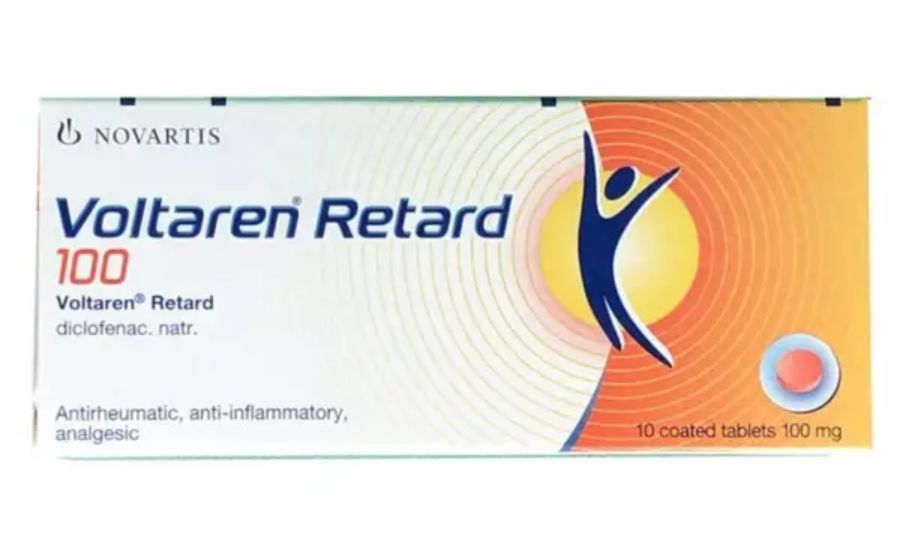Olbernac Retarde Available Formulations, Potential Side Effects, & More
Introduction
Pain and inflammation are common symptoms of numerous medical conditions, ranging from arthritis and muscle injuries to more complex musculoskeletal disorders. Managing these symptoms effectively is crucial for improving quality of life and restoring mobility. In the realm of pharmaceutical solutions, Olbernac Retarde has emerged as a trusted option, offering long-lasting relief through its advanced extended-release formulation.
Designed to cater to the needs of individuals experiencing chronic discomfort, Olbernac Retarde delivers consistent and prolonged pain management. Its unique formulation ensures steady absorption, allowing patients to maintain a level of comfort throughout the day with minimal dosing frequency. This feature makes it a go-to recommendation for medical professionals and patients seeking both efficacy and convenience in their treatment plan.
One of the standout aspects of Olbernac Retarde is its versatility. It is primarily prescribed for addressing inflammation and pain associated with arthritis, a condition that often results in swollen and stiff joints. Additionally, it is highly effective in managing discomfort caused by muscle injuries, soft tissue damage, and other physical strains. Its ability to target a wide range of issues makes it a valuable tool in the management of musculoskeletal conditions.
As with any medication, understanding its uses, benefits, and potential side effects is essential for safe and effective use. Olbernac Retarde is generally well-tolerated, but some individuals may experience mild side effects such as gastrointestinal discomfort, dizziness, or drowsiness. Patients with pre-existing conditions or sensitivities are advised to consult their healthcare provider before incorporating this medication into their regimen.
In addition to its efficacy, Olbernac Retarde stands out for its role in enhancing patient compliance. By reducing the need for frequent doses, it simplifies the treatment process and supports better adherence to prescribed therapies. This can be especially beneficial for individuals managing long-term conditions that require consistent attention.
Olbernac Retarde exemplifies modern advancements in pharmaceutical science, offering patients relief that lasts without compromising safety. Whether used as part of a broader treatment plan or as a targeted solution for specific conditions, it provides a practical approach to managing pain and inflammation. With careful use under medical guidance, this medication can play a significant role in helping individuals regain control over their health and well-being.
This introduction sets the stage for a deeper exploration of the uses, benefits, side effects, and precautions associated with Olbernac Retarde, providing a well-rounded understanding for those considering its use.
What is Olbernac Retarde?

Olbernac Retarde is a nonsteroidal anti inflammatory drug (NSAID) that performs a pivotal function in dealing with ache and inflammation. It operates by way of inhibiting the production of prostaglandins, natural chemical substances within the frame accountable for triggering inflammation, pain, and fever. The precise extended-launch (Retarde) method ensures a constant launch of the medication into the bloodstream, imparting extended relief and lowering the need for frequent dosing.
Key Active Ingredients
The number one active element in Olbernac Retarde is often Aceclofenac or a similar compound. Renowned for its effective anti-inflammatory and analgesic homes, this ingredient effectively alleviates symptoms related to a number of painful conditions, making sure stepped forward consolation and mobility for patients.
Available Formulations
Olbernac Retarde is commonly available in several convenient formulations to meet diverse patient needs:
Tablets: Standard doses suitable for daily management.
Capsules: A flexible option for easy consumption.
Extended-Release Versions: Ideal for long-lasting relief with reduced dosing frequency.
Applications and Benefits of Olbernac Retarde
Olbernac Retarde is widely prescribed for its effectiveness in addressing various conditions marked by pain and inflammation. Its uses include:
Osteoarthritis
- Relieves joint pain and stiffness.
- Enhances mobility in individuals with degenerative joint diseases.
- Rheumatoid Arthritis
Eases inflammation and joint pain.
- Helps prevent long-term damage to joint structures.
- Ankylosing Spondylitis
- Reduces spinal discomfort and stiffness.
- Targets inflammation in larger joints to improve quality of life.
Muscle Injuries
- Treats pain from sprains, strains, and soft tissue damage.
- Promotes faster recovery through inflammation control.
- Postoperative Pain
- Minimizes discomfort and inflammation following surgeries.
- Aids in smoother recovery with consistent pain relief.
Why Olbernac Retarde?
The extended-release formulation of Olbernac Retarde ensures consistent therapeutic levels in the body, offering sustained relief for chronic conditions. This feature not only enhances patient compliance by reducing the need for multiple doses but also supports a more convenient and manageable treatment plan.
When used under the guidance of a healthcare professional, Olbernac Retarde serves as a reliable solution for managing pain and inflammation, empowering patients to lead more active and comfortable live
How Does Olbernac Retarde Work?

Olbernac Retarde is a widely used nonsteroidal anti-inflammatory drug (NSAID) that gives effective alleviation from ache, infection, and swelling. Its mechanism of motion involves inhibiting the enzyme cyclooxygenase (COX), that is vital for the production of prostaglandins—herbal chemical substances answerable for triggering irritation and pain. By blocking off COX, Olbernac Retarde reduces those signs and symptoms, assisting sufferers regain consolation and mobility.
Advantages of the Extended-Release (Retarde) Formulation
The Retarde system of Olbernac stands out because of its particular layout, which steadily releases the drugs over the years. This innovation gives numerous benefits:
- Consistent Relief: Maintains a stable attention of the drug in the bloodstream, supplying extended and effective symptom manipulate.
- Enhanced Convenience: Reduces the want for common dosing, often requiring simply one or two doses day by day.
- Minimized Side Effects: The slow launch enables prevent sudden spikes in drug ranges, reducing the danger of negative reactions.
- Dosage and Administration
- Proper dosing and management are essential for the safe and effective use of Olbernac Retarde.
- Adults: The usual dosage is one pill (2 hundred mg) a couple of times day by day, depending at the severity of the circumstance and the patient’s wishes.
- Children: Generally no longer endorsed for pediatric use except explicitly prescribed by a healthcare issuer.
How to Take Olbernac Retarde

Take the drugs after food to lessen the danger of gastrointestinal discomfort.
Swallow the tablet whole with water; do not crush or chew, as this can interfere with the extended-release mechanism and alter its effectiveness.
Potential Side Effects
While Olbernac Retarde is well-tolerated by most individuals, some may experience side effects. These range from mild to severe, depending on individual reactions and pre-existing health conditions.
Common Side Effects:
- Stomach discomfort or pain
- Nausea or vomiting
- Diarrhea or constipation
- Dizziness or headache
Serious Side Effects:
- Stomach ulcers or gastrointestinal bleeding
- Elevated blood pressure
- Kidney or liver complications
- Allergic reactions, including rash, swelling, or difficulty breathing
When to Seek Medical Help
Critical Warnings and When to Seek Help
Olbernac Retarde, while effective, requires careful attention to potential side effects. Consult a healthcare provider and stop using right away if you encounter:
- Severe abdominal pain
- Blood in stools
- Jaundice (yellowing of skin or eyes)
- Symptoms of an allergic reaction include breathing difficulties or puffiness.
Key Precautions and Considerations
To ensure safe use, it is important to understand who should avoid or exercise caution with Olbernac Retarde:
Who Should Avoid Olbernac Retarde?
- people who have previously experienced NSAID allergies.
- Patients with active stomach ulcers or gastrointestinal bleeding.
- Those with severe liver or kidney conditions.
- Pregnant or breastfeeding women, unless specifically prescribed.
Medication Interactions
Olbernac Retarde may interact with other drugs, altering their effects or increasing the likelihood of side effects. For example:
- Blood thinners (e.g., Warfarin): Heightened risk of bleeding.
- Antihypertensives: Potential reduction in effectiveness of blood pressure control.
- Corticosteroids: Increased gastrointestinal risks.
Lifestyle Recommendations
Alcohol and Diet
- Avoid alcohol while using Olbernac Retarde to lower the risk of stomach ulcers.
- Maintain a balanced diet with anti-inflammatory foods to support treatment and minimize side effects.
Benefits of Olbernac Retarde
Olbernac Retarde stands out for its ability to provide effective and sustained relief:
- Long-Lasting Relief: Extended-release formulation offers consistent pain management throughout the day.
- Improved Quality of Life: Reduces discomfort, enabling daily activities.
- Convenient Dosing: Fewer doses encourage better adherence.
- Dual Action: Combines pain relief and inflammation control in one medication.
Alternatives to Olbernac Retarde
If Olbernac Retarde is unsuitable, other NSAIDs or strategies may be explored:
- Ibuprofen: Effective for mild to moderate pain.
- Diclofenac: Offers similar benefits for pain and inflammation.
- Paracetamol (Acetaminophen): A gentler option for those who cannot tolerate NSAIDs.
Non-medical approaches, such as physical therapy, hot/cold treatments, or dietary modifications, can also complement or replace medication.
Natural Pain Management Strategies
Combining medication with natural techniques can enhance overall effectiveness:
Dietary Adjustments
- Incorporate anti-inflammatory foods like turmeric, ginger, and omega-3s.
- Reduce processed foods and excessive sugar intake.
Physical Activity
- Engage in gentle exercises like swimming or yoga to boost joint flexibility.
- Practice regular stretching to ease stiffness.
Mind-Body Practices
- Examine deep breathing exercises and meditation to help control chronic pain.
Patient Feedback on Olbernac Retarde
Patients often report significant improvements, including:
- Enhanced mobility and reduced stiffness in arthritis-related conditions.
- Better sleep due to alleviation of nighttime pain.
- Convenience of once-daily dosing.
Olbernac Retarde is a trusted solution for managing chronic pain and inflammation, but proper use, medical guidance, and lifestyle adjustments are essential for achieving optimal outcomes.
FAQs
1. What is Olbernac Retarde used for?
Olbernac Retarde is an NSAID (nonsteroidal anti-inflammatory drug) commonly used to treat pain and inflammation associated with conditions like arthritis, muscle injuries, and other musculoskeletal disorders. It helps reduce swelling, stiffness, and discomfort, improving mobility and quality of life.
2. How does Olbernac Retarde work?
Olbernac Retarde works by inhibiting the enzyme that produces prostaglandins, which are responsible for causing pain, inflammation, and fever in the body. By blocking this enzyme, it helps reduce the symptoms of pain and inflammation, providing long-lasting relief.
3. What are the benefits of the extended-release (Retarde) formulation?
The extended-release formulation of Olbernac Retarde provides consistent and prolonged pain relief throughout the day. This reduces the need for multiple doses and helps maintain a steady level of the medication in the bloodstream, making it more convenient for patients.
4. How should I take Olbernac Retarde?
Take Olbernac Retarde after food to minimize stomach discomfort. Swallow the tablet whole with a glass of water; do not crush or chew it, as this could affect its extended-release action. Always adhere to the dosage recommendations made by your healthcare provider.
5. What are the possible side effects of Olbernac Retarde?
Common side effects may include stomach discomfort, nausea, diarrhea, dizziness, or headache. More serious side effects, though rare, include stomach ulcers, gastrointestinal bleeding, and liver or kidney complications. Contact your healthcare provider if you experience any severe side effects.
6. Who should avoid Olbernac Retarde?
People with a history of allergic reactions to NSAIDs, active stomach ulcers, gastrointestinal bleeding, severe liver or kidney conditions, or those who are pregnant or breastfeeding should avoid using Olbernac Retarde unless specifically prescribed by a doctor.
7. Can Olbernac Retarde interact with other medications?
Yes, Olbernac Retarde can interact with blood thinners, antihypertensive medications, corticosteroids, and other drugs. These interactions may increase the risk of bleeding or reduce the effectiveness of certain treatments. Inform your doctor about any other medications you are taking.
8. How should I respond if I encounter serious adverse effects?
If you experience severe abdominal pain, blood in stools, yellowing of the skin or eyes (jaundice), or signs of an allergic reaction like swelling or difficulty breathing, stop taking Olbernac Retarde immediately and seek medical help.
9. How can I manage pain and inflammation naturally while using Olbernac Retarde?
In addition to medication, you can manage pain and inflammation through dietary adjustments, such as eating anti-inflammatory foods like turmeric, ginger, and omega-3 fatty acids. Low-impact exercises, like yoga or swimming, and practices such as meditation and deep breathing can also help manage pain.
10. Are there any alternatives to Olbernac Retarde?
If Olbernac Retarde isn’t suitable, alternatives like ibuprofen, diclofenac, or paracetamol may be recommended. Additionally, non-pharmaceutical options like physical therapy or dietary changes can support pain management. Always consult your healthcare provider to find the best option for your needs.
Final Words
In conclusion, Olbernac Retarde is a enormously powerful answer for handling chronic ache and inflammation, specifically for conditions like arthritis, muscle accidents, and submit-operative restoration. Its prolonged-release components guarantees steady, long-lasting remedy with minimum dosing, making it a handy preference for plenty sufferers. While generally properly-tolerated, it is critical to be privy to potential facet results and follow medical steering for safe use. By combining Olbernac Retarde with healthful life-style practices consisting of a balanced weight loss program, physical interest, and conscious ache management strategies, patients can considerably improve their nice of lifestyles and regain mobility. Always consult a healthcare company before starting any new treatment to ensure the excellent possible results.
Read More Information About Health At blogtale.org






